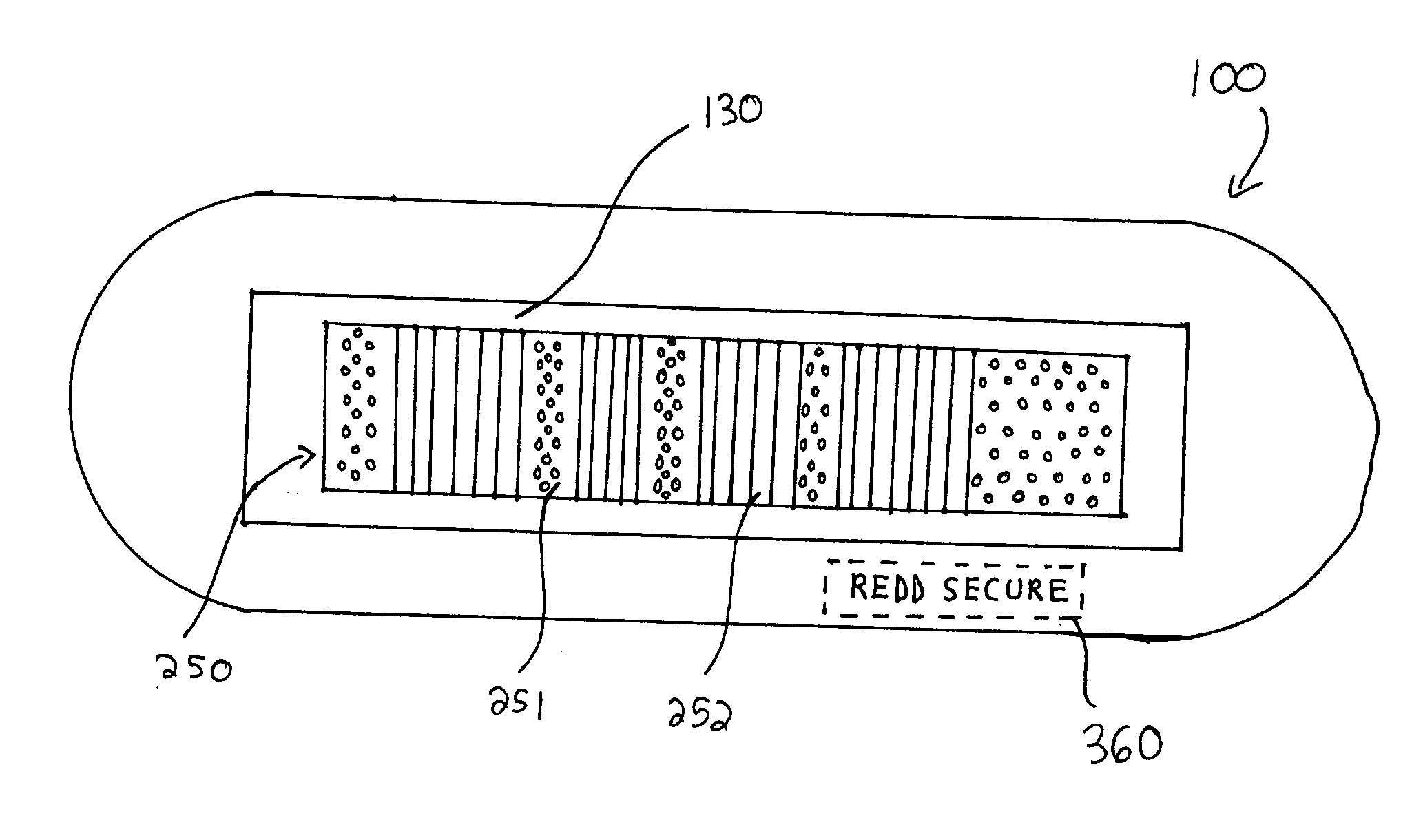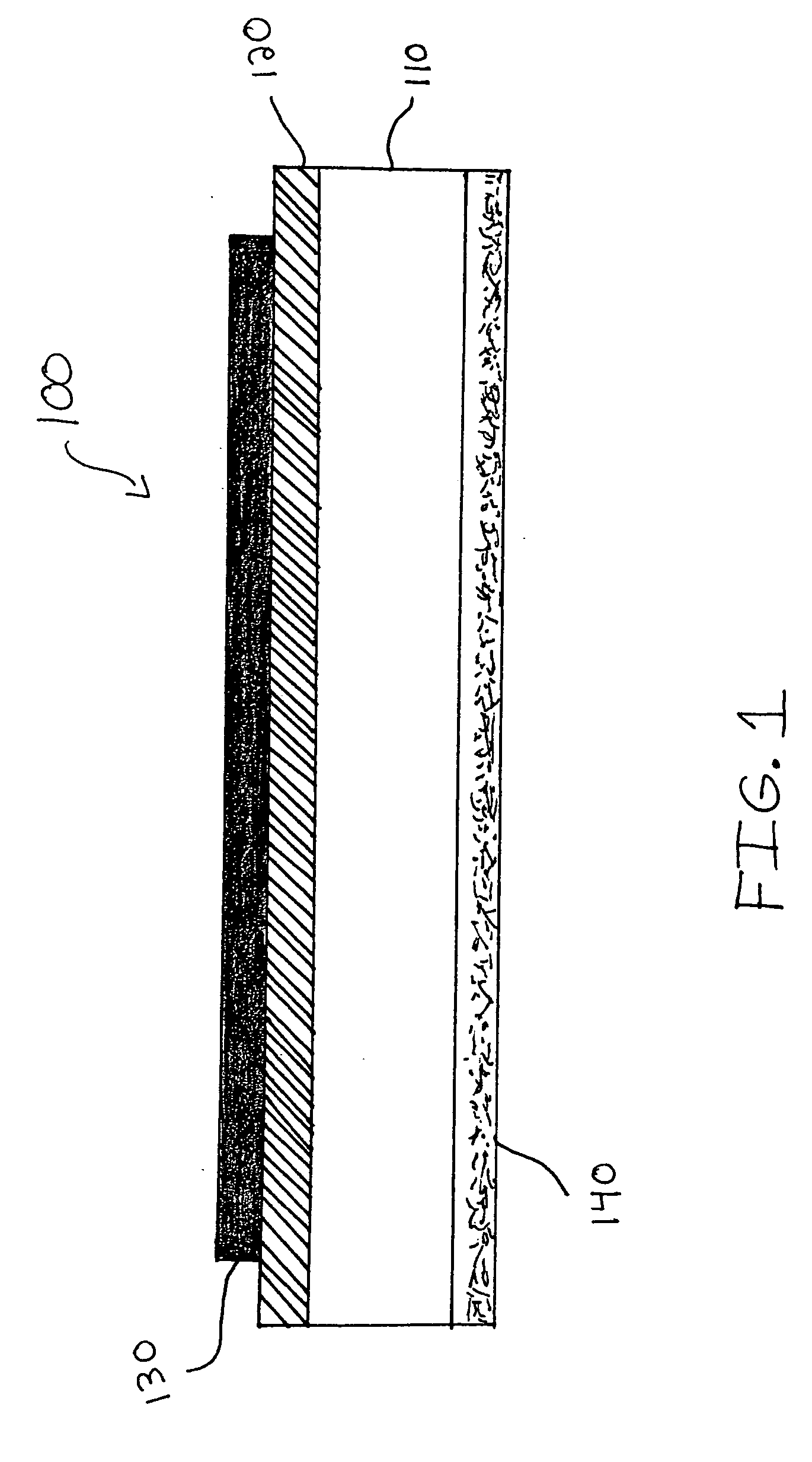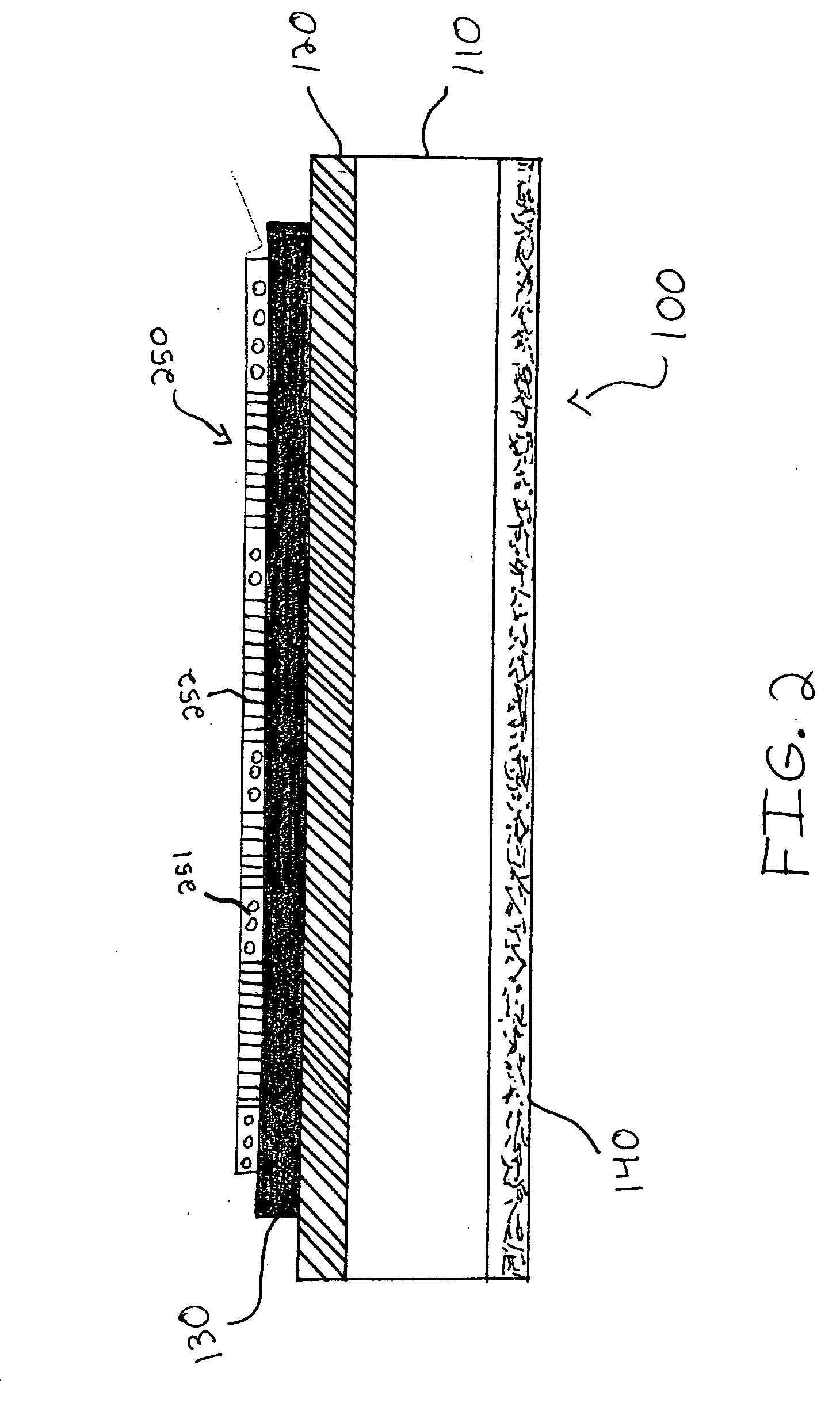Label for receiving indicia having variable spectral emissivity values
a technology of spectral emissivity and label, applied in the field of labels, can solve the problems of inability to tell whether the product contains a security mark, uv inks using ultraviolet light have proved to be susceptible to copying, alterations and counterfeiting, and achieve the effect of facilitating the faster and cheaper detection of transitions and high thermal conductivity
- Summary
- Abstract
- Description
- Claims
- Application Information
AI Technical Summary
Benefits of technology
Problems solved by technology
Method used
Image
Examples
Embodiment Construction
[0021]FIG. 1 is a cross-sectional side view of one embodiment of a secure, machine readable label 100 constructed in accordance with the principles of the present invention. As explained in greater detail below, label 100 may be applied to a document or other product, and is adapted to receive and facilitate the detection of invisible (or visible) indicia having variable spectral emissivity values.
[0022] Label 100 includes substrate 110, thermally conductive layer 120, background layer 130 and adhesive layer 140. Substrate 110 can be made, for example, from paper, plastic, tyvec, a metallic film or a metallic foil. Persons skilled in the art will appreciate, however, that substrate 110 can be made from any suitable material, and that the invention is not limited in this manner.
[0023] Substrate 110 can be either physically separate from, or integral to, the document or product to which label 100 is applied. For example, in various embodiments of the present invention, substrate 110...
PUM
| Property | Measurement | Unit |
|---|---|---|
| emissivity | aaaaa | aaaaa |
| thermally conductive | aaaaa | aaaaa |
| wavelengths | aaaaa | aaaaa |
Abstract
Description
Claims
Application Information
 Login to View More
Login to View More - R&D
- Intellectual Property
- Life Sciences
- Materials
- Tech Scout
- Unparalleled Data Quality
- Higher Quality Content
- 60% Fewer Hallucinations
Browse by: Latest US Patents, China's latest patents, Technical Efficacy Thesaurus, Application Domain, Technology Topic, Popular Technical Reports.
© 2025 PatSnap. All rights reserved.Legal|Privacy policy|Modern Slavery Act Transparency Statement|Sitemap|About US| Contact US: help@patsnap.com



